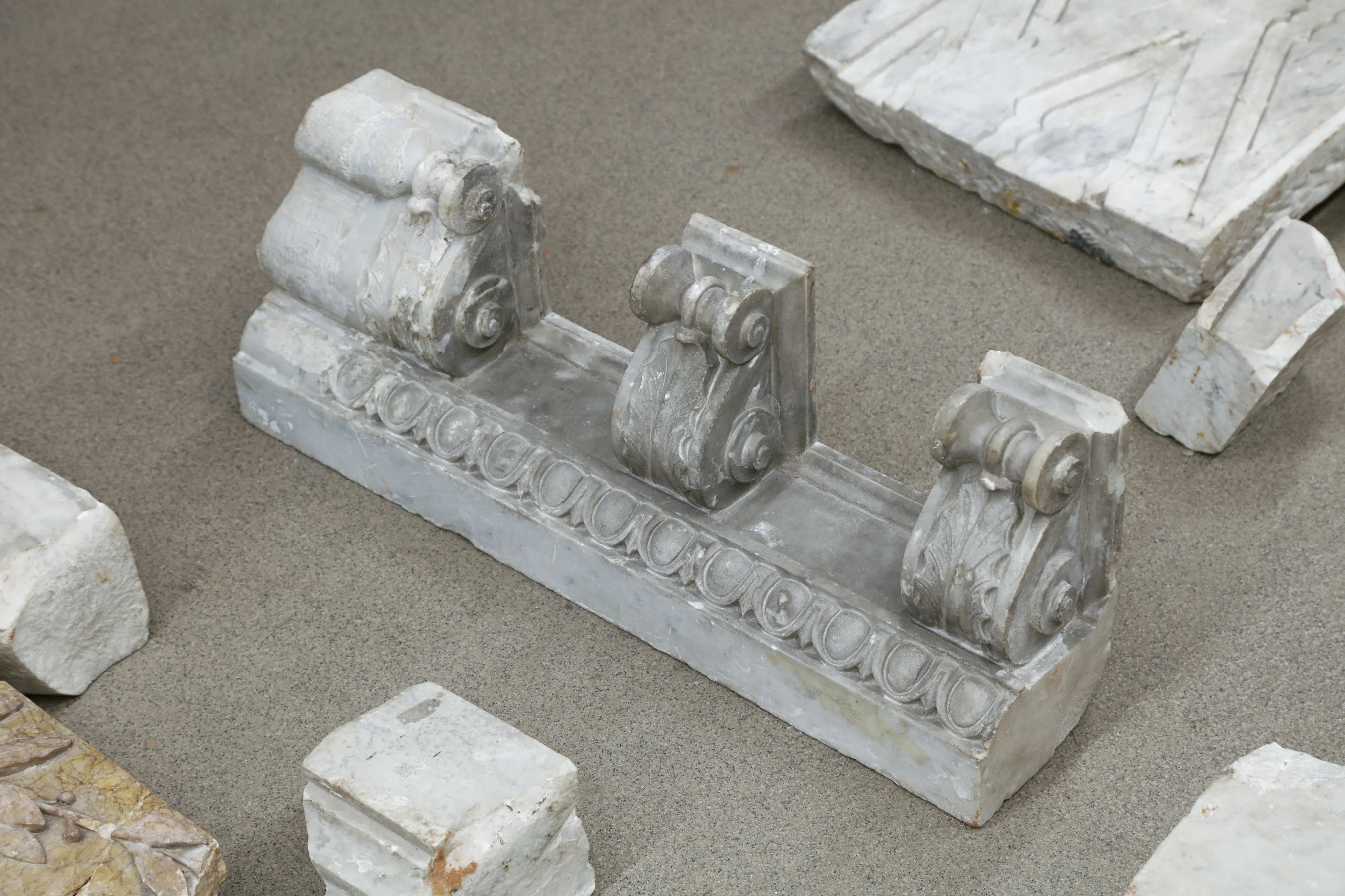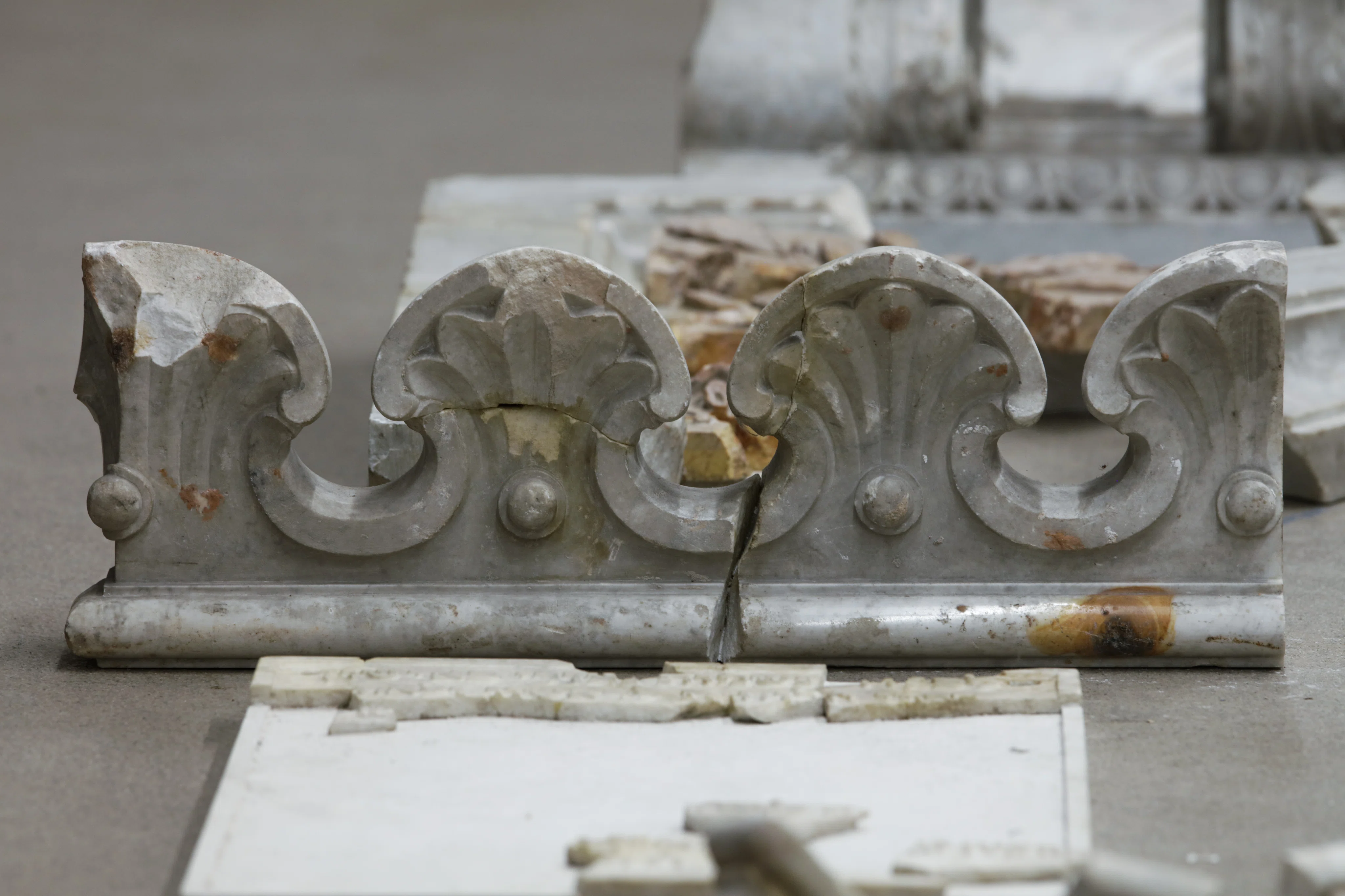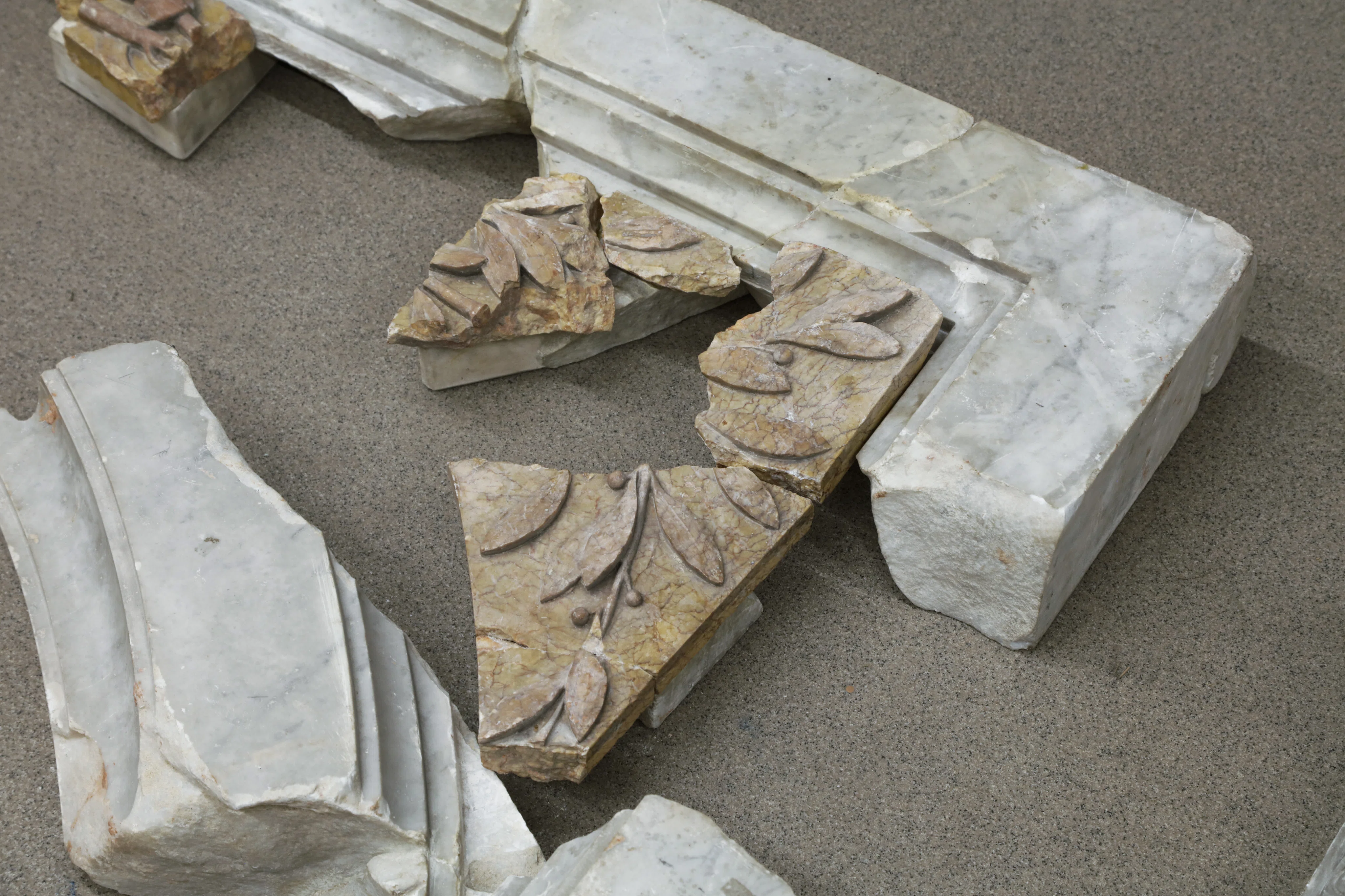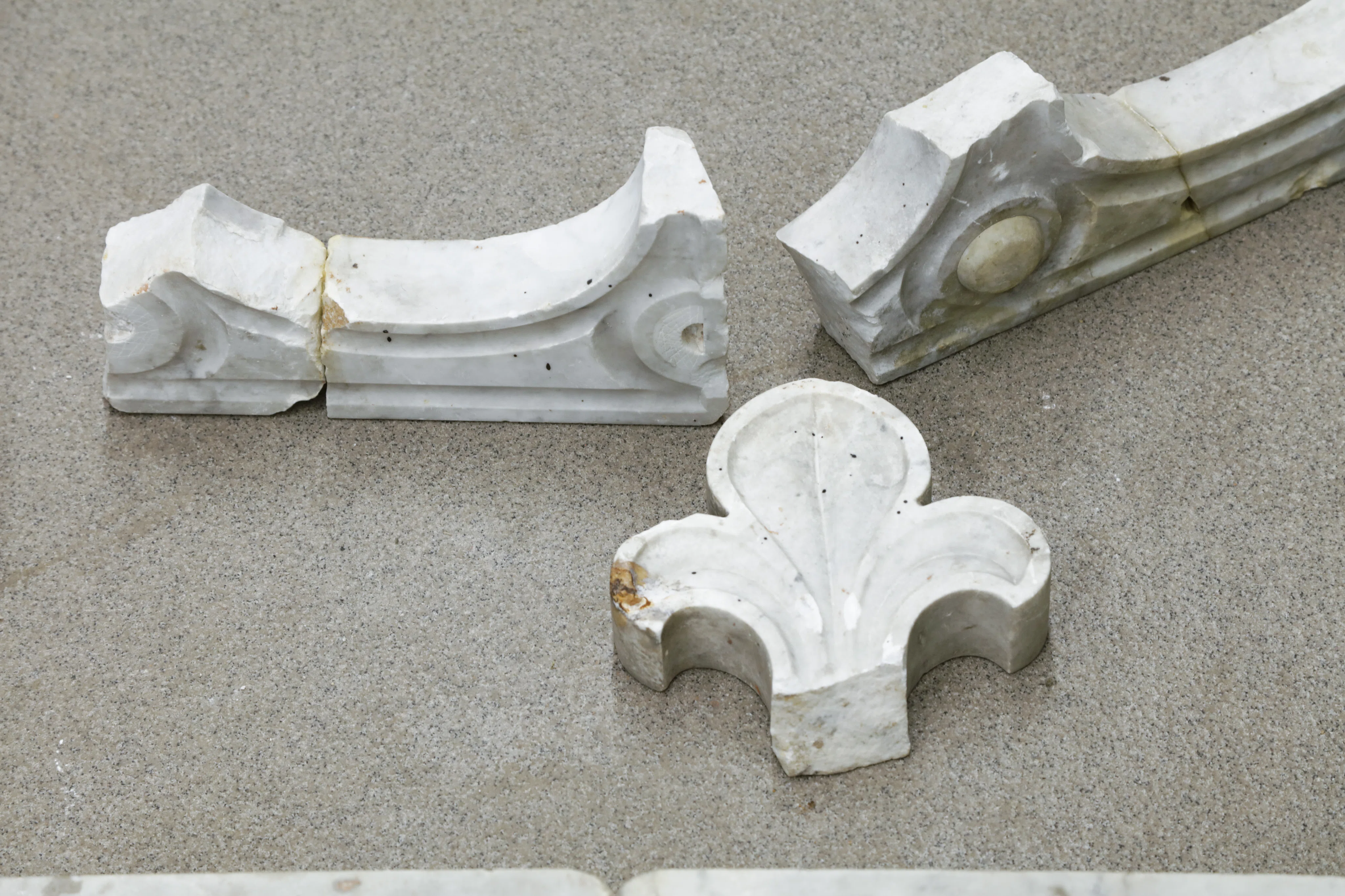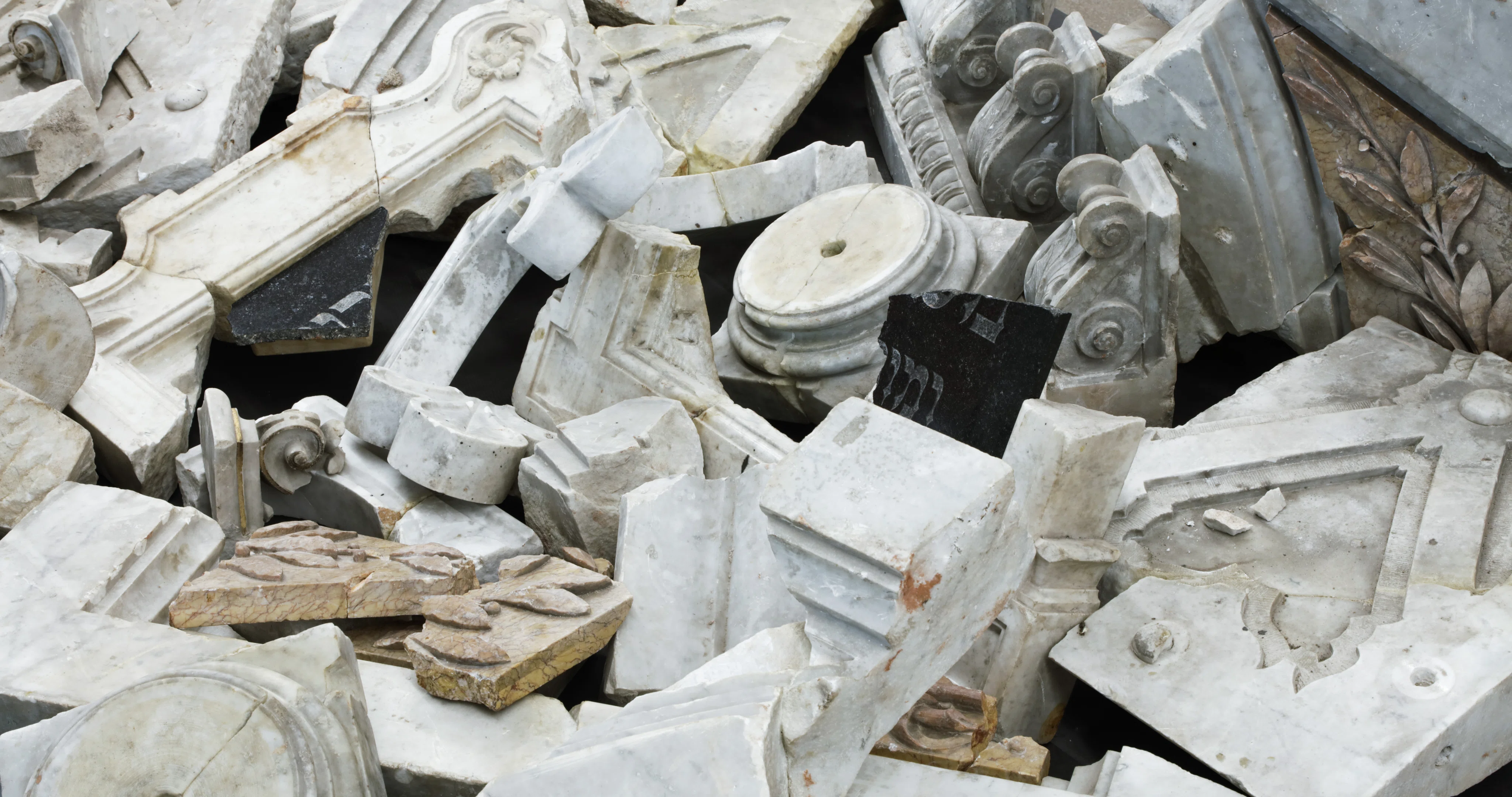
The Torah Shrine of the Synagogue at Börneplatz
In the summer of 1990, the last surviving remains of the former synagogue were uncovered and documented at Börneplatz. In the basement of the building, which had been filled with demolition rubble, the archaeologists discovered numerous fragments of the synagogue's destroyed Torah shrine. Until now, its appearance and dimensions could only be reconstructed on the basis of historical texts and photographs.
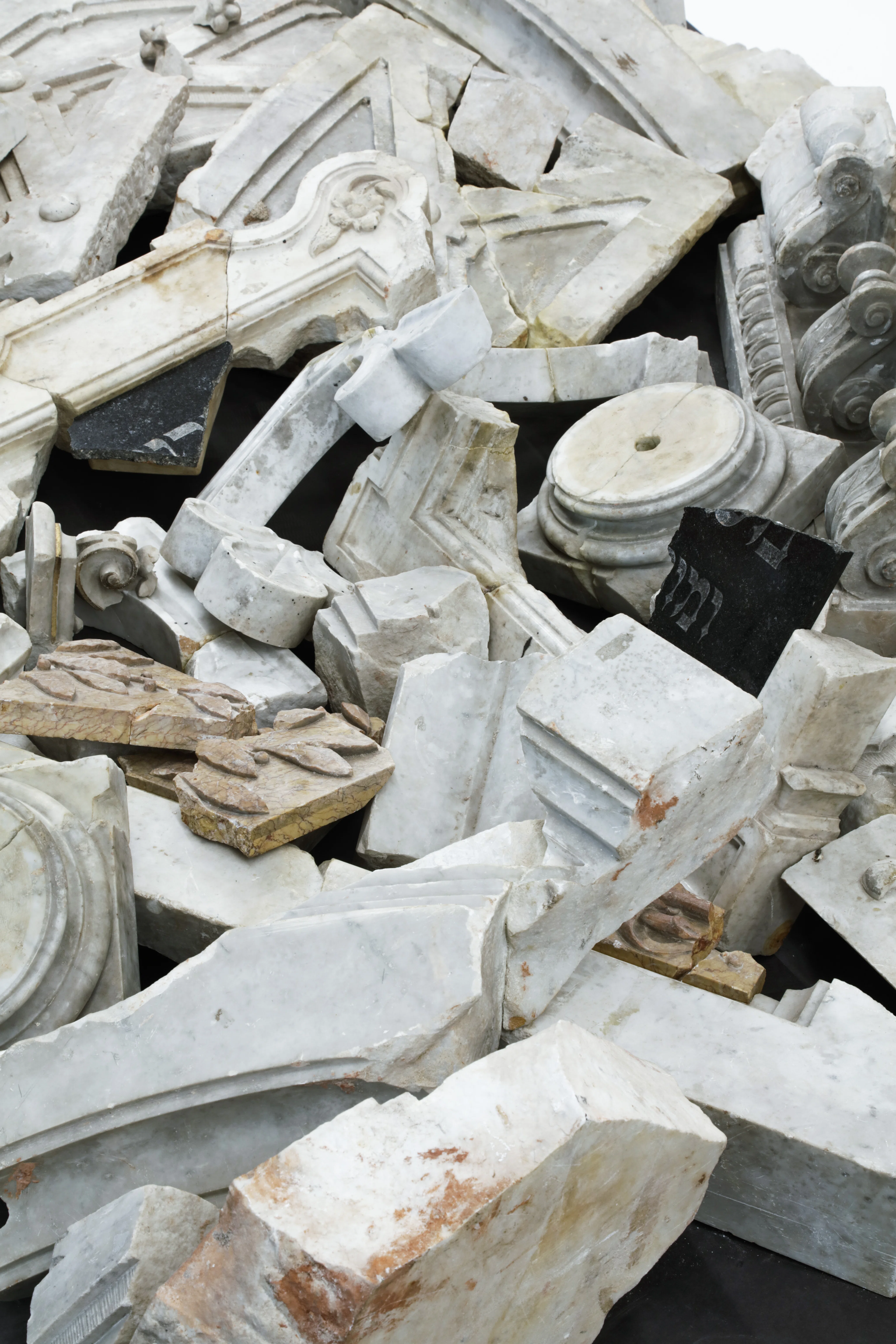
Some photos, like this one from 1882, show the Torah shrine standing in the apse before and after the extension of the synagogue completed in 1901, which led to its widening. With the help of the dimensions of the preserved objects, it was possible to adjust the photos to scale. This resulted in a drawing of the findings, in which the stone fragments can be located in the monument.
The multi-storey Torah shrine was probably about 7 m high and 4 m wide. It stood in the east-facing apse of the building. During the reconstruction work around the turn of the century, the shrine was widened by at least 70 cm on each side. This can be proved by the photographs and a preserved fragment of a frieze crowning the extension. On the second floor, the semicircle is partially surrounded by orange-colored marble slabs on which laurel branches are carved out.
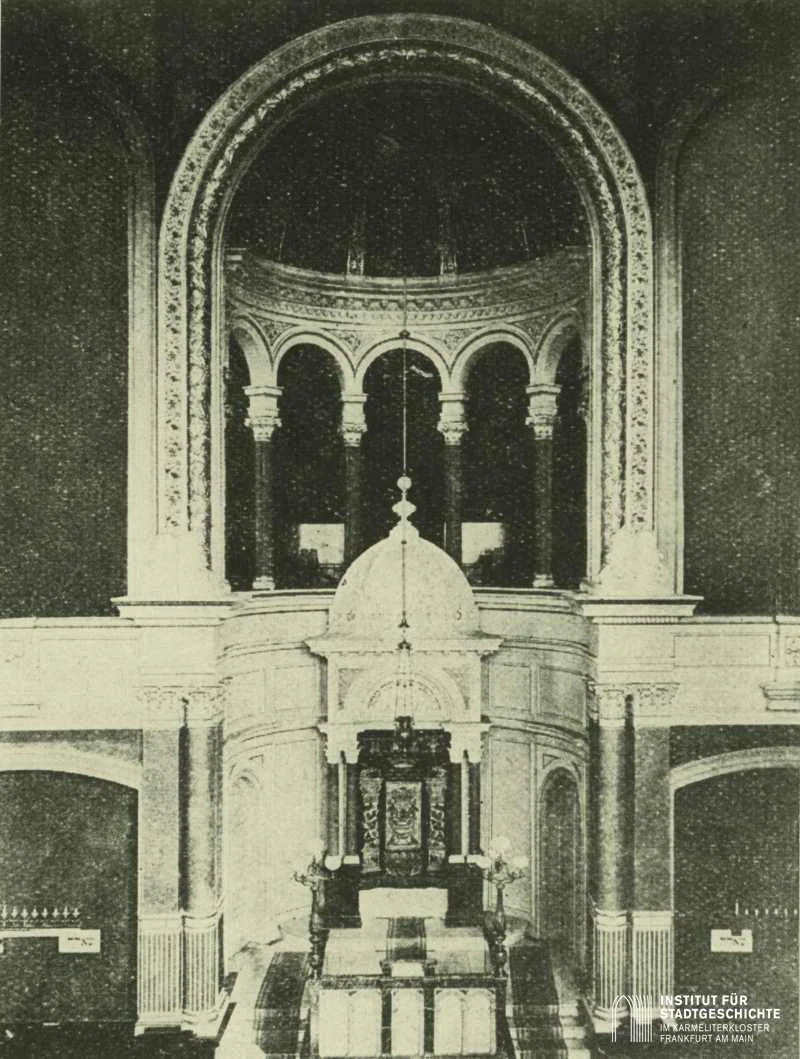
The complete shrine was probably made of marble. In the pedestal zone, a darker stone material was apparently used, of which, however, no originals are currently available. The same applies to the four column shafts. The capitals, of which only some volutes have been preserved, and two complete column bases, on the other hand, were made of white marble. The bases are in the original. White marble also dominates the monument in other respects.
The floors are divided by cornices, which were probably elaborated only on three sides. The upper, final cornice is executed as a cantilever cornice. The crowning dome probably had a lower diameter of 2.40 m and consisted of six segments. Four marble panels with inscriptions cannot be assigned to any component at present. Likewise, profile moldings, cladding made of orange marble, cannot be precisely located. They could have decorated the reading desk standing in front of the shrine.
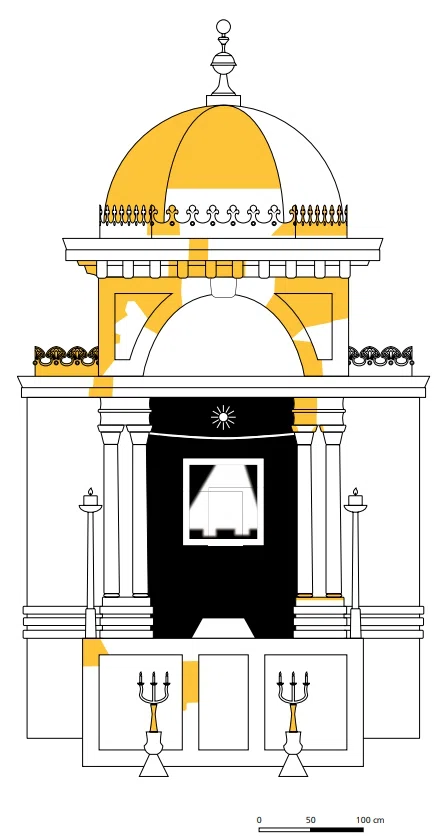
In the restoration workshop for stone monuments of the Archaeological Museum, the fragments of the destroyed Torah shrine were sorted and laid out. Its remains, in their immediacy and tactility, are a rare and impressive testimony to the pogrom of November 9/10, 1938 and the complete destruction of the synagogue in the following months.
Individual parts of the Torah shrine were first presented in the Museum Judengasse in 1996. After the remodeling of the Museum Judengasse in 2016, many of the archaeological objects exhibited there until then returned to the Archaeological Museum Frankfurt.
Since the end of 2019, the Archaeological Museum Frankfurt has been scientifically processing the find inventory comprising more than 500 find boxes as well as several pallets with architectural parts from the excavations of the years 1987 to 1990 at Börneplatz. They will be made available to the public in digital form as part of the METAhub Frankfurt cooperation project.

Traces of destruction
The stones show the traces of brute force. The Torah shrine was not simply dismantled, rather it was literally smashed.
These traces belong to the exhibit. They document its history and must therefore be preserved. The restoration concept is based on this requirement.
